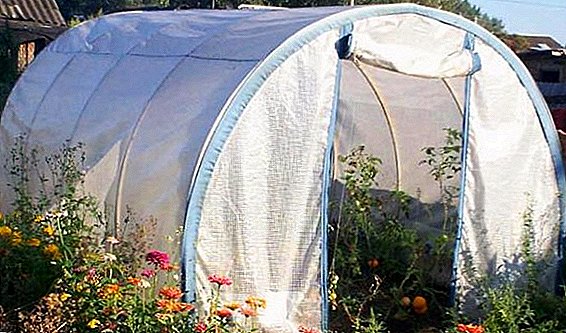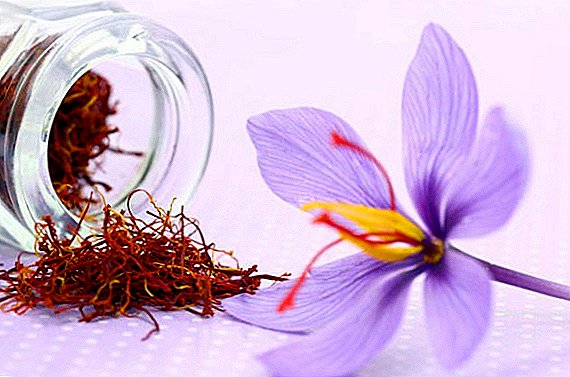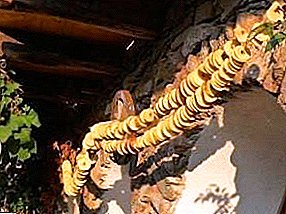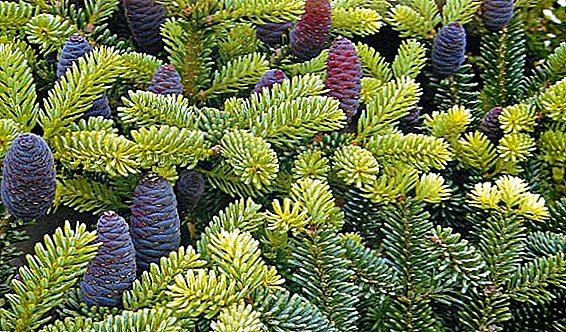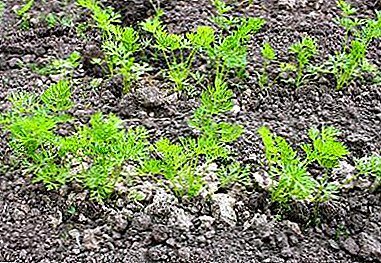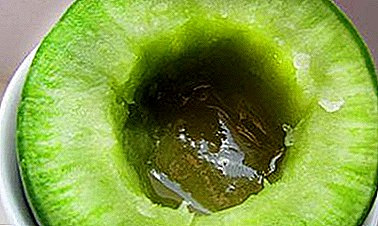
Hibiscus - a common indoor plant, which is highly valued among gardeners for decoration. Some believe that this flower is unpretentious, others argue that it is difficult to care for him.
What does this flower look like? Where did it come from? What varieties does it have? What does he look like? How to reproduce? These and other questions will be answered by this article.
In addition, here you can get acquainted with the photos of this wonderful flower in order to appreciate its beauty and decide whether to grow it or not.
Description
Terry hibiscus (Hibiscus rosa-sinensis) is a species of plants of the Hibiscus genus of the Malvaceae family. It is also called Chinese rose. In Malaysia is called Bungaraya.
It is an evergreen shrub capable of growing up to 3 m. Lives 20-22 years. The leaves are large, oval-shaped with a toothed edging, smooth green with a shiny surface, attached to the bare plant stem with petioles.
Flowers reach a diameter of 16 cm and can be of different colors., depending on the variety. Petals are arranged in several layers, close to each other, because of which the flower seems to be terry. This gave the name of the form. The fruits of hibiscus - small boxes with seeds inside.
The flower is native to southern China and northern Indochina, but it can successfully grow in other areas with a tropical or subtropical climate.
Popular indoor varieties and their photos
White
Hibiscus rosa-sinensis “Lady Stanley” - a variety with semi-double flowers of white and pink color. It blooms from June to August. Due to prolonged drought may bloom later.

Red
Hibiscus rosa-sinensis “Gamburg” has large flowers, terry, bright cherry-red color.

Pink
Hibiscus rosa-sinensis “Rosa” has semi-double pink flowers.

Peach
Hibiscus rosa-sinensis “Ankara” has yellow matte flowers with a red core.

Yellow
Hibiscus rosa-sinensis “Koenig” is a variety with bright yellow terry flowers.

Home care
- Temperature. In warm time, the temperature of the room in which the plant is located should reach 22-23 ° C, in winter it should be lowered to 18 ° C. If the temperature is below 12 ° C, the Chinese rose can bud.
- Watering. Hibiscus loves moisture, so it needs to be watered abundantly. In the summer - 2 times a day, at another time - 1 time. The soil should always be wet and loose. You can also spray the plant from the spray.
- Shine. The flower prefers diffuse natural lighting. In summer it grows well in the fresh air. When it becomes warm, you can make hibiscus on the balcony or in the garden, but then you should prune it from direct sunlight.
- Priming. The soil in which hibiscus grows must be loose and breathable. The composition of the soil needed: sod, leaf and coniferous soil, peat, sand, manure, a little charcoal. The plant is suitable soil with neutral acidity.
- Pruning. It is necessary to cut the Chinese rose in the spring, before the start of active growth, so that the crown is neat. Cut pruning shears or sharp scissors. It is necessary to shorten the stems of a plant at an angle above the leaf itself or directly above the most lateral shoot. Trim the ends should be sprinkled with charcoal or cinnamon.
- Top dressing. During flowering hibiscus should be fed at least once a week with organic or complex fertilizer for flowering plants. Top dressing is carried out in the morning or in the evening. It is desirable that during feeding was cool.When a Chinese rose stops blooming, it is fed no more than once a month. The plant is also useful foliar feeding. Root fertilizer diluted with water in the ratio of 1:10 and periodically spray them with hibiscus.
- Pot. The flower is growing rapidly, so it must be planted in a spacious container. In the pot must be drainage.
- Transfer. Young plants are transplanted or rolled over each spring in larger pots. Adult hibiscus transplanted every 3-4 years.
- Wintering. In winter, the plant needs a dormant period for the flowering to be more abundant. Air temperature should be 13-18 ° C, watering infrequent. If the temperature stays at the same level as in summer, the hibiscus will need to be sprayed with water from time to time. It will not affect the health of the plant, only the flowering will not be too abundant.
Breeding
 Seeds of the Chinese rose almost do not propagate. You can try, but it is a long process that does not always end successfully. Therefore, reproduction is usually carried out by vegetative means:
Seeds of the Chinese rose almost do not propagate. You can try, but it is a long process that does not always end successfully. Therefore, reproduction is usually carried out by vegetative means:
- For planting use the upper parts of the shoots with several buds on them.
- After pruning, the cuttings are treated with growth stimulants.
- Then you can either immediately put in the ground, or put in a glass of water.
If you choose the second method, you should remember that the water in the glass should be a bit and it should be changed every 3-4 days until the plant has roots.
If you immediately plant in the substrate, you must:
- Moisten the soil with water from a spray bottle and deepen the seedlings by 0.7-1 cm. To prevent the branches from falling, you can press down the soil around the seedling.
- The seedling is covered with a plastic bag, leaving little room for air penetration.
- The cutting and the soil around it should be sprayed daily with water.
- For the plant to root faster, a temperature of about 25 ° C is needed.
- When a seedling takes root, it is planted in a separate cup.
- While the plant is not yet sufficiently strengthened for transplanting into a permanent container, it is necessary to maintain high temperature and humidity around it.
- In a permanent pot, seedlings are transplanted when the roots fill the entire glass, and the cutting itself reaches 10 cm.
Diseases and pests
Among the pests that attracts Chinese rose:
- thrips;
- spider mite;
- whitefly;
- aphid.
You can cope with them by treating the plant with insecticides.
Due to chlorosis, hibiscus leaves may fall. It is necessary to change the water, which is watered the flower. Under insufficient light, the leaves of the plant turn yellow.
Similar flowers
- Abutilon (Abutilon) - Also known as the Abomination. A genus of evergreens of the family Malvaceae, whose birthplace is South America.
- Mallow or Mallow (Malva) is a genus of herbaceous plant of the family Malvaceae.
- Althea (Althaea) is a genus of annual or perennial herbaceous plants of the Malvaceae family.
- Stockrose (Alcea) is a genus of ornamental plants with large flowers of various colors from the Malvaceae family.
- Hatim (Lavatera) - a genus of grasses, shrubs, some trees of the Malvaceae family. It has beautiful pink flowers.
Terry hibiscus is a beautiful representative of the Malvaceae family. If you take care of him properly, he will decorate the house with his bright colors almost all year round. Therefore, it is an ideal choice, both for experienced flower growers, and for any person.



